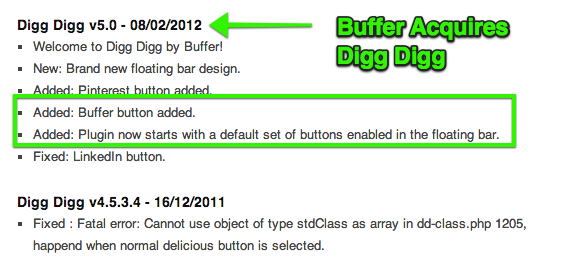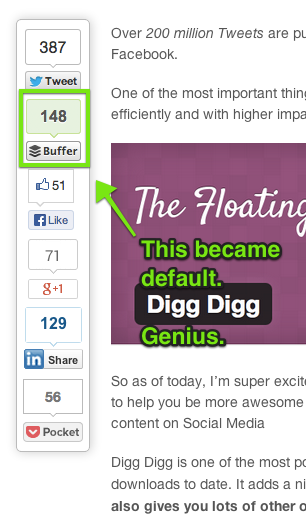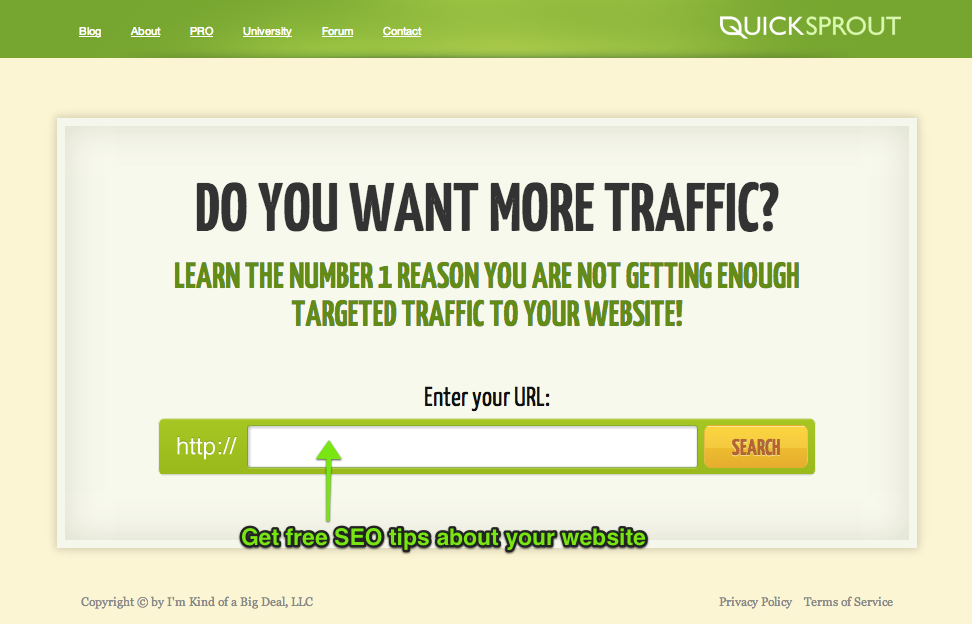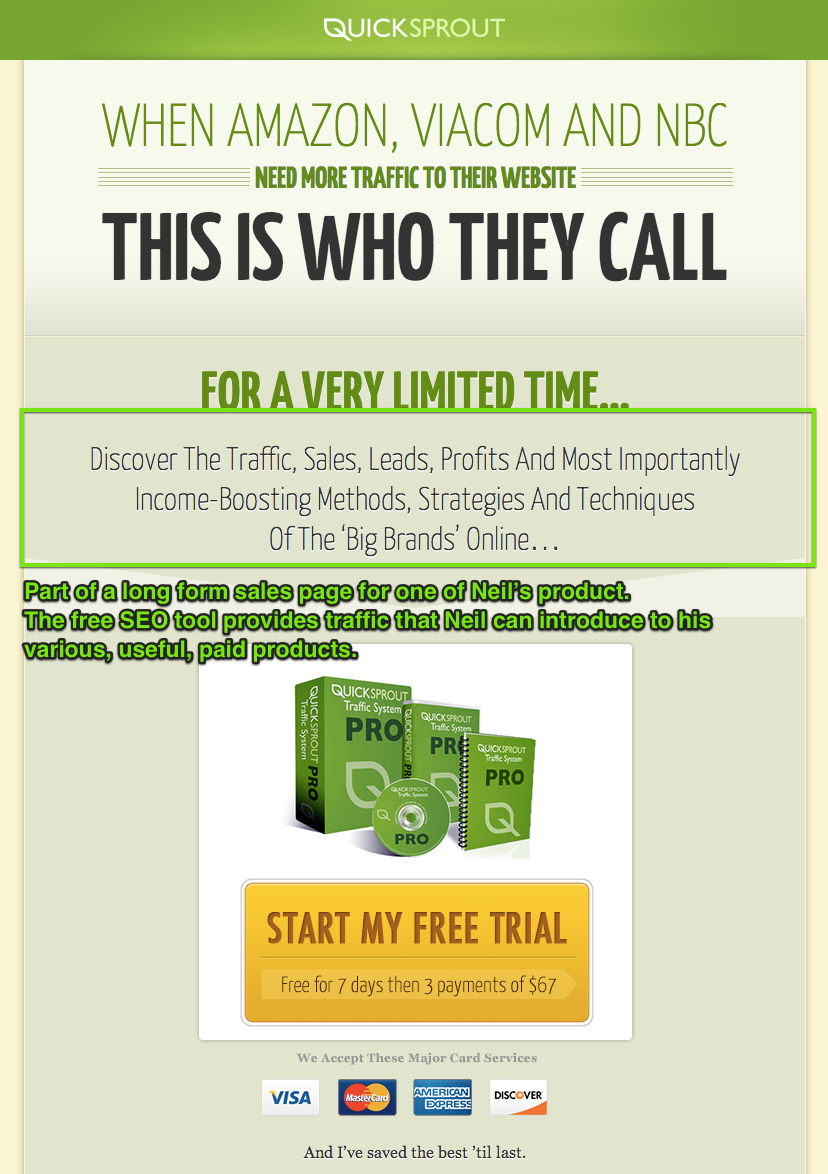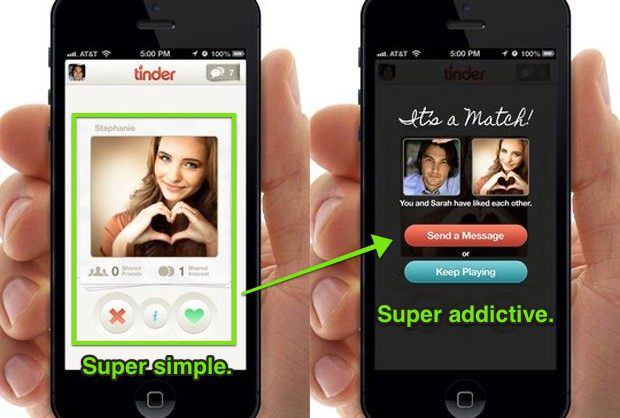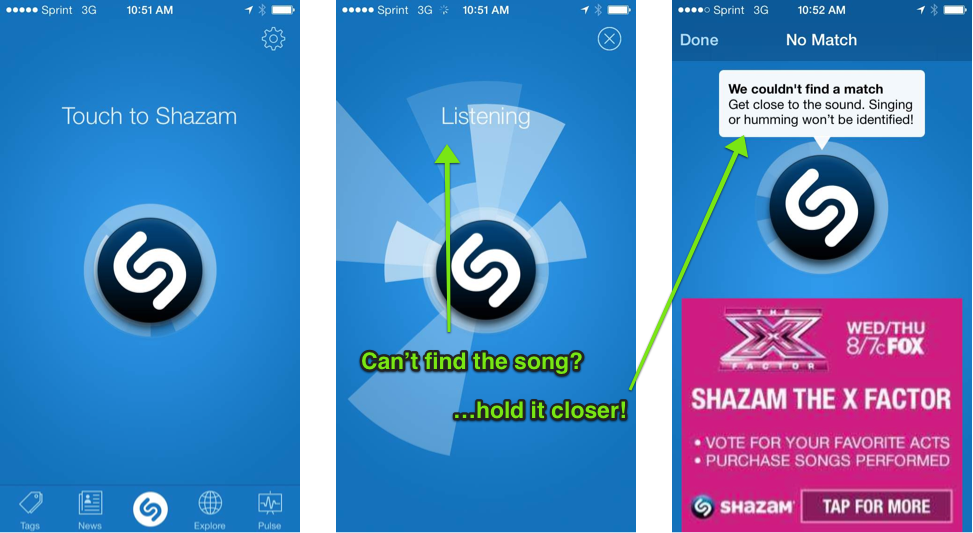- All Posts
- /
- 3 Distribution Strategies that Could Provide You with Inspiration for an Exponential Growth

3 Distribution Strategies that Could Provide You with Inspiration for an Exponential Growth
News and Updates-
 Chris Hexton
Chris Hexton
-
Updated:Posted:
On this page
When it comes to marketing there are traditional approaches like pay-per-click advertising, newsletter advertising, billboards, directories, radio, webinars, and the new and popular approaches of inbound marketing, partnerships, and remarketing.
…yet, it’s often the less traditional approaches that lead to the biggest growth. Andrew Chen shared his observations on one of AirBnB’s fantastic distribution hacks:
[external_quote the_quote=”Airbnb does just this, with a remarkable Craigslist integration. They’ve picked a platform with 10s of millions of users where relatively few automated tools exist, and have created a great experience to share your Airbnb listing.” image=”https://getvero.com/wp-content/uploads/2013/12/may2012.jpg” name=”Andrew Chen” link=”https://andrewchen.co/2012/04/27/how-to-be-a-growth-hacker-an-airbnbcraigslist-case-study/”]
AirBnB let customers list on Craigslist, increasing the usefulness of their platform and opening up a whole new audience. This hack wasn’t a simple plug-and-play solution. It required thinking outside the box.
It’s these sorts of strategies that drive insane growth: these are the opportunities you should be looking out for. Here are 3 distribution strategies that you probably haven’t thought of. 3 strategies that could provide you with inspiration for an exponential growth tool of your own.
1. Acquire a complementary service or product
When Pin Payments acquired Spreedly earlier this year, they exemplified how using an acquisition strategically can instantly bring customers to a growing product and improve the overall offering of both products for current customers.
Pin Payments is an all-in-one payment gateway that lacked the ability to manage subscription payments. Spreedly was the opposite; they had a way to manage subscription payments, but required you to plug in a merchant account.
By purchasing Spreedly, Pin no doubt acquired many new customers and improving their product.
This strategy is nothing new, though it is regularly overlooked. There are many reasons to acquire other companies and one of the most common is to get access to a new customer base: a customer base you can cross-sell your main products to.
Take social-media sharing tool Buffer. A few years ago Buffer acquired a relatively small WordPress plugin called ‘Digg Digg’.
The plugin allowed WordPress site owners to install a simple widget that added the Twitter, Facebook and other sharing buttons to each of their blog posts. It was easy to install and very practical. A great plugin.
Buffer purchasing a plugin to add the social media buttons for services like Facebook and Twitter might seem a little esoteric at first but it is probably the best example of an acquisition for the sake of distribution that you’ll see.
You can see what the Digg Digg plugin does when implemented on a WordPress blog by looking to the left (we use Digg Digg).
Before being acquired, the Digg Digg bar had been developed for ~2 years. It was was regularly updated and usable, but not flashy. After the acquisition, here’s the first change the Buffer team pushed:
Why is this awesome? Everyone that installs Digg Digg could all of a sudden easily add a Buffer button to every post on their blog alongside Twitter and Facebook. Better yet, that button is enabled by default.
Having just made an awesome acquisition, Buffer did the smart thing and went to town sharing how easy Digg Digg made it for their customers to add social sharing to their blogs.
Buffer encouraged current Buffer customers to install Digg Digg. Combined with the press coverage they received for the acquisition this meant that the Digg Digg bar,and the Buffer button, started cropping up everywhere. The net result is that every time anyone visits a blog post on any blog that runs Digg Digg, Buffer gets marketing exposure.
This created a savvy acquisition channel for Buffer. Here’s what happens if you’re not a Buffer user and you click a Buffer button:
This is a fantastic example of an extremely well-executed acquisition. This approach is relatively rare at the grass-roots level and much more common at the bigger end of town.
In 2011, eBay acquired Magento, an eCommerce platform.
eBay needs merchants. It needs quality merchants to ensure it has a great range of products available. eBay realised it could also make money selling new, quality goods through its platform to a huge audience of hundreds of millions of customers. How to get more merchants? Acquire Magento.
eBay wants you to list your Magento products on eBay and your eBay products on Magento. If you’re a Magento user, here is how easy it is to list your items on eBay too:
Another great example of an acquisition that makes a lot of sense from a distribution standpoint.
Growth tip: To be really successful an acquisition should encourage customers of both the current and new products to adopt the entire ecosystem quickly.
By acquiring such a useful plugin in Digg Digg, Buffer encouraged current users to adopt the tool, increasing exposure immediately. Likewise, WordPress and Digg Digg users could find value in Buffer.
eBay purchased a platform that let its current customers start up their own store, let store owners sell products on eBay, and in doing so, created network effects that are hard to beat.
What complimentary products or services exist for your product, and how could you combine them with your own to multiply your distribution by a factor of 10?
2. Build it and give it away
Neil Patel recently launched the QuickSprout SEO website analyzer:
The analyzer is a free tool into which anyone can place their URL and get a host of practical tips to improve their SEO. From comparing your page speed to finding errors in your titles and meta data to comparing you to your competitors, Neil’s free tool puts a lot of value in one place.
Neil himself talks of the $45,000 he’s already spent building the tool and the many more thousands he’ll spend to improve it.
Neil’s approach in releasing a free tool is to create something people will get value from, talk about, share and, in turn, drive new and relevant traffic to QuickSprout.
Building what is essentially a new product is risky but, if it fills a need and delivers value, it can be an extremely powerful way to drive large amounts of consistent traffic over the long term.
The website analyzer is already generating around 1,000 URL analyses per day. The ultimate aim of the tool is to generate leads for Neil’s consulting businesses and, potentially, for a premium version of the tool.
Calls to action around the tool point visitors in the direction of Neil’s more serious educational products.
It’s an effective strategy and Neil was kind enough to share the reason he put so much effort into building a free tool:
[quote the_quote=”Building a free tool to market your site can be extremely powerful. Companies like Moz.com and HubSpot have made great use of this tactic in the past. Quick Sprout’s new analyzer is doing extremely well and it can easily be monetized to bring in thousands of new customers a month.” image=”https://getvero.com/wp-content/uploads/2013/12/neilpatelsidebar.jpg” name=”Neil Patel” link=”https://quicksprout.com”]
The website analyzer is not the first example of a free tool playing an important role in customer acquisition.
Moz has embraced this approach effectively for a long time now. Check out their range of free tools:
Moz.com offers great free products like FollowerWonk and Open Site Explorer. These are regularly shared as they are extremely practical, improving the Moz.com product range and bringing in new traffic. It’s a no-brainer to share free tools like Open Site Explorer when they provide such great value.
HubSpot are another B2B example. Their Marketing Grader has long been a tool that packs a punch for online marketers. HubSpot’s marketing grader is massively popular, with nearly 5,000 back links, over 17,000 Facebook likes and 3,000 direct Twitter shares. Not bad for a tool pitched at B2B marketers that is funnelling you toward a product that costs more than $800/month.
For a non-B2B example we should look no further than one of 2013’s most explosive mobile apps, Tinder.
Tinder is technically a subsidiary of IAC, maker of Match.com and owner of OkCupid.com. When you look at it with this in mind, Tinder takes on a whole new perspective: it’s a gateway drug for Match.com and OkCupid.com, IAC’s revenue-driving properties.
IAC CEO Gregory Blatt recently said in BusinessWeek:
[external_quote the_quote=”The more people we can get to try these services, whether we own them or not, the more likely they are to use our other services.” image=”https://getvero.com/wp-content/uploads/2013/12/GregBlatt.jpeg” name=”Greg Blatt” link=”https://iac.com/”]
This might explain why Tinder is focused so heavily on growth and not revenue. Launched earlier in the year, Tinder has clocked up 13 billion swipe-ratings (whether you think someone is hot or not, basically), and that was in September.
With over 500 million actual matches, Tinder is the fastest growing dating app and is showing no signs of slowing down.
By taking a new angle, IAC has, in essence, been able to build a ‘free tool’ which provides their core products with new leads. It also increases the appeal of online dating for an entirely new audience: one that doesn’t want to fill out forms of ‘demographic’ questions and isn’t as ‘serious’.
Growth tip: How can you bolster your product offering by introducing a free tool that is useful and will get new potential customers interacting with and sharing your entire product range?
Developing a quality free tool is a great way to generate new traffic and leads if you already have an audience you can leverage and a product you can sell.
3. Generate business from your customers’ customers
Using your own customers to advertise your business to their networks is possibly the most powerful way to generate more business.
The base of all ‘viral’ growth, customer-to-customer advertising is extremely difficult to engineer.
The route to take totally depends on your business model.
Alex, founder of online help desk and chat software GrooveHQ shares how he surveyed new customers and found that over 50% of new signups reported they had found Groove after seeing the Groove chat widget on other websites.
In light of this, they implemented a ‘Powered by Groove’ stamp on their chat widget:
Visitors that come via this widget are 4 times more likely to convert to paid customers than those that don’t. That’s incredible.
[quote the_quote=”Referrals are our best source of new customers, hands down. It may not be our biggest channel, but trial users who come in through referral channels are more likely to convert, more likely to stay with Groove, and more likely to refer us to others. The referrers have already done the hardest job — getting their friends to give Groove a try. All we have to do is deliver.” image=”https://getvero.com/wp-content/uploads/2013/12/alex-t.png” name=”Alex Turnbull” link=”https://groovehq.com/blog”]
…but not all businesses have the luxury of leveraging their customers’ websites. Most of us have to think outside the box.
Finding ways to generate word of mouth marketing is the focus. More traditional methods such as loyalty offers or discounts work well. Ambassador has helped businesses large and small harness the power of word of mouth with it’s platform for referral-based marketing. Co-Founder Jeff shares his thoughts:
[quote the_quote=”Word of mouth works. Ambassador has helped businesses such as SaaS startups generate hundreds of thousands in LTV and established brands (such as T-Mobile & Chegg) leverage their customers to drive hundreds of referrals a day.” image=”https://getvero.com/wp-content/uploads/2013/12/Jeff_Epstein.jpg” name=”Jeff Epstein” link=”https://getambassador.com”]
For something a little more out of the ordinary, Ryan Hoover recently blogged about a subtle product marketing tactic from Shazam. If you try to identify a song with the iOS or Android app on your phone and Shazam can’t determine what it is, it asks you to hold your phone closer to the source, generally prompting the user to raise their hand in the air or just generally stand out.
This creates word-of-mouth marketing, at the very least encouraging your immediate group of friends to ask what on earth you’re up to.
The idea of engineering word-of-mouth isn’t new at all. Gyms are a fantastic example of a bricks-and-mortar business that uses merchandise to encourage word-of-mouth. Many gyms will include a bag, drink bottle or other visible accessory as a sign-on bonus.
This might seem warm and fuzzy but the truth is that this merchandise contributes strongly to the brand and advertising for the gym. Furthermore they extend the lifetime value of customers.
Some basic statistics: 88% of people recall the brand on promotional products they receive (increased brand awareness), 59% of recipients have a more positive view of the provider after receiving a promotional product (people buy from people they like), 53% of recipients use at least one promotional item per week (continuing exposure to your brand).
It seems fair to argue that this strategy is effective. Promotional products have been around for decades and with these sorts of statistics it’s not hard to see why.
Growth tip: how can you get your customers to share your business with their networks. Perhaps you could leverage merchandise (a tried and true tactic), build in functionality that encourages your customers to visually or electronically share (the holy grail!) or leverage every aspect of face time you get with your customers (like Groove above).
What you can do next
These three strategies should all give you ideas on how you can get more customers consistently and scalable:
- Acquire a company or product that can expand your product suite, bring more customers and make you more money overnight.
- Build a tool or product that generates shares and buzz. Make it useful and you’ll see consistent traffic seeking out your business.
- Harness the power of word-of-mouth, using your customers and their connections to create more business.
The best thing you can do next is ask your customers two questions:
a. How did they find your business? b. What is their biggest problem / biggest wish using your product right now?
Looking at these answers (particularly the trends) can reveal ideas you can build from to find a product to test with your current customer base or encourage word-of-mouth.
So – what marketing ‘hack’ will you try next?
